Murder, robbery and paranormal activity: three new releases
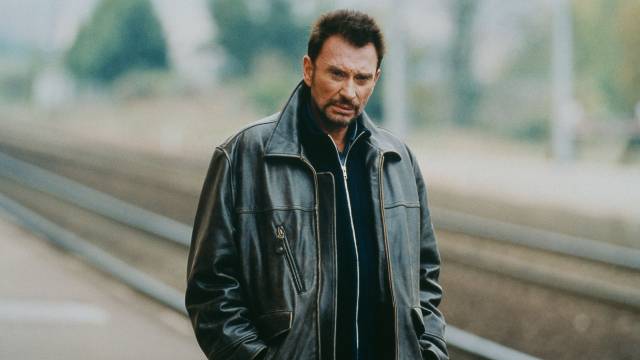
I’ve been trying to work on my attitude recently, letting go of worries about the impression conveyed by what I choose to watch and write about. This doesn’t mean my viewing habits have particularly changed, but I’ll try to make more conscious choices about what I write. So I’ll skip over the numbingly violent excesses of Kim Hong Sun’s action-horror Project Wolf Hunting (2022), and the cliched horrors of Vacations of Terror 1 & 2 (1989, 1991), a pair of Mexican movies involving a haunted doll made long before The Conjuring (2013) and Annabelle (2014), and the minor regional horror of Curse of the Blue Lights (John Henry Johnson, 1988), and talk a bit about three more rewarding movies, all new to me, which span nine decades, the earliest from pre-Code Hollywood, the most recent made during the Covid lockdown.
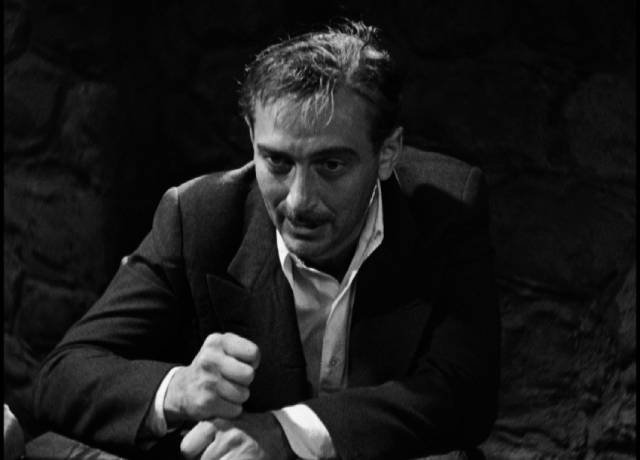
The Kiss Before the Mirror (James Whale, 1933)
Following Show Boat late last year, I recently caught up with another of James Whale’s non-horror movies. The Kiss Before the Mirror (1933), made between The Old Dark House (1932) and The Invisible Man (1933), is an overwrought melodrama adapted from a 1932 work by Hungarian playwright Ladislas Fodor and, like many early talkies, it remains somewhat stagebound, though Karl Freund’s atmospheric cinematography gives talky scenes some visual interest. The cast is early-’30s A-list – future Wizard of Oz Frank Morgan, Hungarian emigre Paul Lukas, Gloria Stuart, Walter Pidgeon and Nancy Carroll – but what is most notable about the film today is the rampant misogyny displayed with startling pre-Code openness.
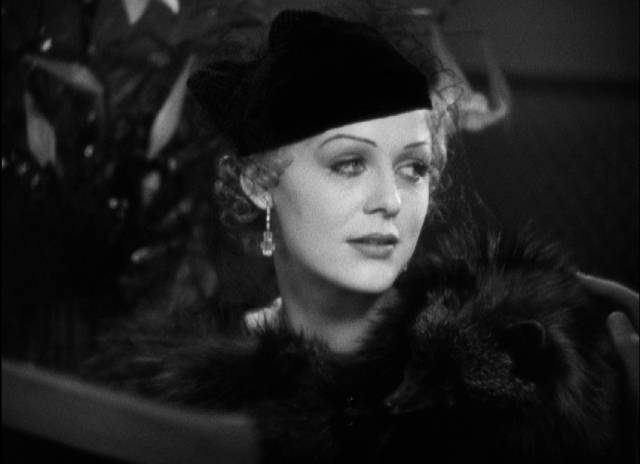
In the opening scene, married woman Lucy Bernsdorf (Stuart) arrives at her lover’s mansion and prepares for sex by adjusting her makeup in front of the vanity mirror in the bedroom. While her lover (Pidgeon) is out of the room getting some wine, her husband Walter (Lukas) sneaks up to the window and, seeing her obvious joy at being in the other man’s bedroom, takes out a revolver and fires through the window. Charged with murder, Walter turns to his friend Paul Held (Morgan) to defend him, although, in despair at what he’s done, he has resigned himself to his fate.
Having heard Walter’s account of discovering his wife’s unfaithfulness when he watched her at her mirror, Paul returns home to find his own wife Maria (Carroll) at her own mirror, putting on makeup. When he tries to kiss her, she turns away to prevent him smearing her makeup and the resonance with the story he’s just heard triggers his own suspicions. He follows Maria when she leaves the house and discovers that she too has a lover (apparently very common in bourgeois Budapest). Jealousy and anger inflamed, he’s determined to get Walter acquitted on grounds of justifiable homicide – Lucy’s behaviour was so inflammatory that Walter was overwhelmed by uncontrollable passion.
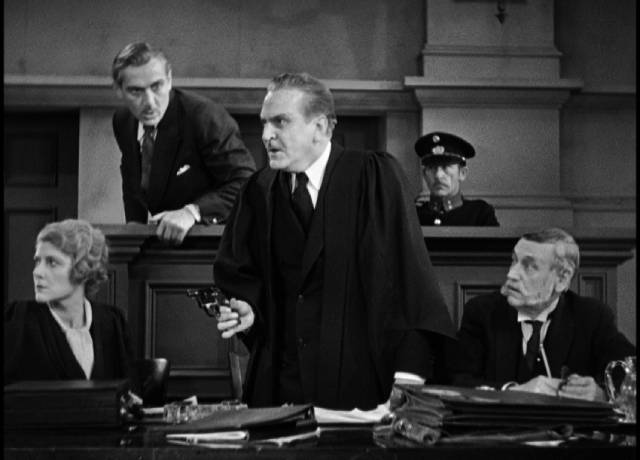
The climax occurs during Paul’s summation on the last day of the trial, during which he argues passionately that no man can be expected to bear the betrayal of an unfaithful wife and, as he reaches a feverish pitch, he pulls out a revolver and points it at Maria, who screams and faints. Absurdly, this menacing display persuades the jury to acquit Walter (who, still plagued by guilt, seems none too happy to have escaped punishment) and, perhaps even more implausibly, leads to a reconciliation with Maria.
The film’s display of rampant marital infidelity among the sophisticated bourgeoisie would, within a year or so, have been impossible in Hollywood, but the misogyny which drives the violence of men against the wives who disrespect them would remain quite acceptable under the Code … in fact, its punitive force would be required, with violations of “morality” demanding the severest punishment.
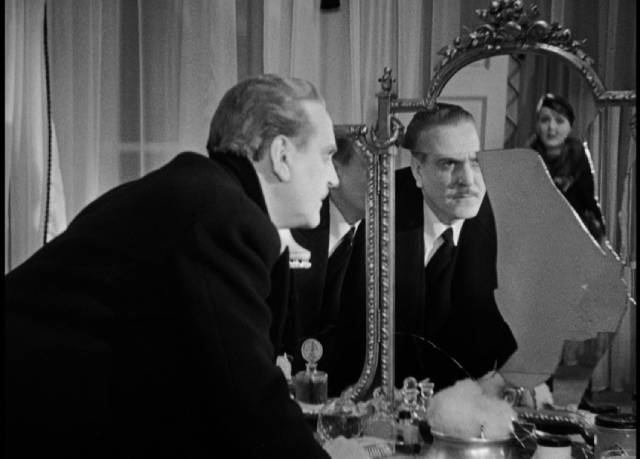
The Kiss Before the Mirror is unsettling for its retrograde attitudes, but nonetheless entertaining, with Whale adding little touches of humour, though a bit more constrained by the material than in his more celebrated horror films. He does manage to sneak in a transgressive note with the character of Paul’s legal assistant, a lawyer named Hilda Frey (Jean Dixon) who is quite clearly coded as lesbian – a career woman dressed in tweed suits who seems to view the goings on with an ironic detachment.
The 2K transfer looks excellent on Indicator’s Blu-ray, which also includes some interesting supplements: there’s a commentary from film historian Nora Fiore and a visual essay comparing the film to the remake Whale was forced to direct by the studio just five years later, possibly because the Code prevented continuing distribution of the original – in this later version, Wives Under Suspicion (1938), the main character becomes the prosecutor trying to get a death penalty for the wife-killer. The oddest extra is a propaganda short directed by Whale in 1942, after his feature career was over; Classification of Enlisted Men details how the military finds the perfect role for each individual based on various criteria, including education, work experience and hobbies.
*
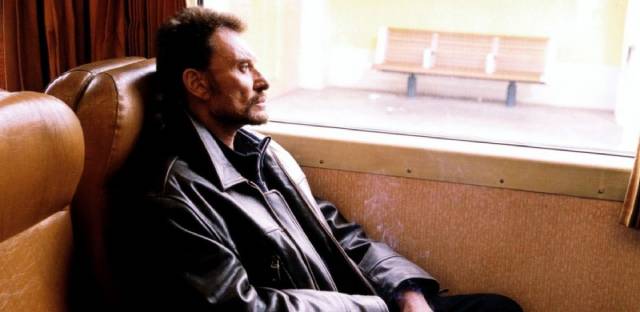
Man on the Train (Patrice Leconte, 2002)
Jumping ahead seventy years to a different kind of crime and an actual Europe rather than a Hollywood studio fantasy of the continent, I just encountered Patrice Leconte’s Man on the Train (2002) for the first time. I know I’ve seen a few of Leconte’s films, but I honestly don’t have any clear memories – Monsieur Hire (1989) was adapted from the same Simenon novel as Julien Duvivier’s Panique (1946), which completely overshadows it in my memory; I vaguely remember Juliette Binoche in The Widow of St. Pierre (2002), which was set on a small island colonized by the French just south of Newfoundland; but I’m not even sure that I ever saw perhaps his best-known film, Ridicule (1996).
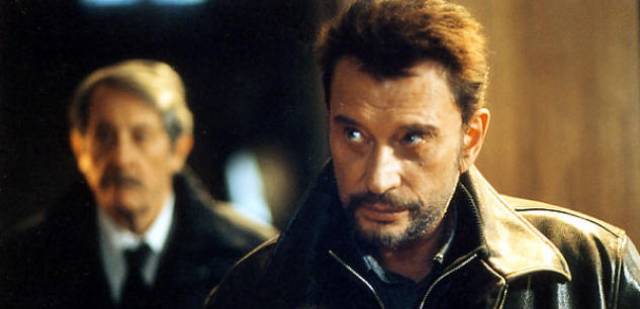
Man on the Train is a small, quiet character study which is almost undone for me by an ending which feels tonally wrong. I’ve seen many movies over the years which fully engage me until their final moments, when the filmmaker either fumbles as he or she tries to find a fitting conclusion to a narrative which proves not to have a clear and apt end; then there are others, many more in fact, which are ruined by that annoying urge to add a final twist which negates everything the audience has been invested in – such as Bill Paxton’s Frailty (2001) or David Cronenberg’s Eastern Promises (2007). Leconte’s film leans towards the former problem.
A gloomy man named Milan (musician Johnny Hallyday) arrives by train in a small French town as evening falls. Pausing at a pharmacy for aspirin, he’s spotted by an older man, Monsieur Monesquier (Jean Rochefort), who strikes up a conversation in the street. As the town’s hotel is closed, Monesquier invites Milan to his house, an old cluttered place clogged with the detritus of generations. Monesquier is a retired teacher, finding in his guest an opportunity to chatter, even though Milan is terse and unresponsive. Agreeing to put the stranger up for a few nights, Monesquier seeks clues to his identity and purpose.
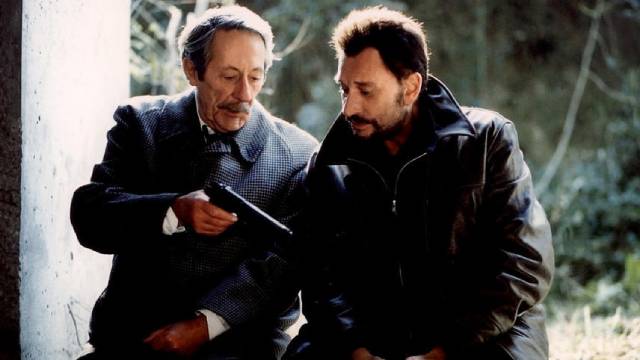
He guesses much of what we learn as Milan meets several other men who also arrive in town; these are the gang he’s brought together to rob the local bank. As the gang develop their plan, the teacher and the criminal form an odd relationship, the former drawn to the latter’s romantic transgression, the latter finding the aura of continuity and family tradition in the house appealing. There’s an unavoidable schematic quality to the very slight story – both men are due to meet their destinies on Saturday, the robber at the bank, the teacher in an operating room where he’s scheduled for heart surgery – and the two threads are eventually brought together by brute force, Milan gunned down by the police after being betrayed by one of the gang, Monesquier dying under the surgeon’s knife. But wait, somehow both men are resurrected and seem to swap lives, finding some new purpose in this exchange of identities.
These concluding moments are irritatingly artificial after the quiet inconsequentiality of the two men’s tentative relationship over the preceding days. What pleasures the film has to offer come from the way Rochefort and Hallyday play off one another and it’s a pity the narrative structure eventually distracts from this character study.
There are no extras on the Kino Lorber Blu-ray, but the film looks fine with its muted colours and overall sense of gloom reflecting the characters’ constricted lives.
*
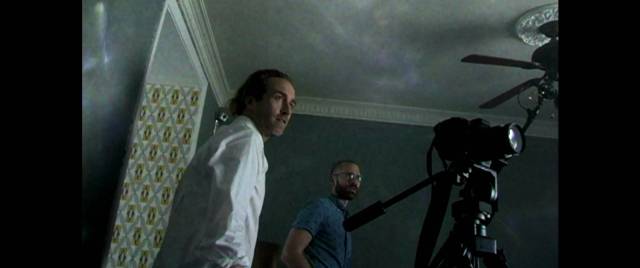
Something in the Dirt (Justin Benson & Aaron Moorhead, 2022)
There’s something ineffable about our relationship with art (and entertainment). Why does one creator’s work resonate but another’s not? Something clicked the first time I saw the work of Justin Benson and Aaron Moorhead – that was Arrow’s two-disk edition of their first and third features, Resolution (2012) and The Endless (2017). If Spring (2014) and Synchronic (2019) didn’t have quite as big an impact, they built on some of the key elements which had immediately appealed to me – the twisty treatment of time and perception, the subtly disturbing suggestions of Lovecraftian cosmic horror and ageless supernatural entities which undermine the material certainties of modern life. But perhaps even more than this appeal to my taste in fantasy and horror, it was Benson and Moorhead’s ability to treat those elements with a low-key naturalism, grounding their imaginative invention in the familiar.
The pair also write, edit, photograph and create the effects for their films, but I wonder if part of my greater liking for Resolution and The Endless is also due to their on-screen presence – both are excellent actors who give increased conviction to the material they themselves have conceived. Which is why I was tantalized last year when I saw that they had made a new film which was essentially a two-character piece completed in their own apartment during the Covid lockdown.
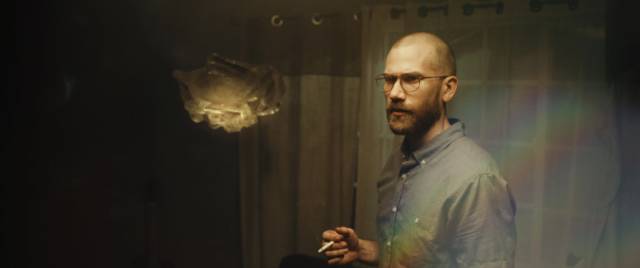
Something in the Dirt (2022) may have been constrained by circumstances, but those imposed limitations have drawn Benson and Moorhead back to the pared-down intimacy of their first feature, Resolution, after the large-scale expansion of Synchronic – and to my taste it’s all the better for that.
Bartender Levi Danube (Benson) moves into an apartment in Los Angeles and encounters his new neighbour, photographer John Daniels (Moorhead). The early scenes do a fine job of conveying the awkwardness of such new chance acquaintances as the two men tentatively learn and reveal details about themselves to each other. John seems to be religious; Levi has something dark in his past. John lends Levi some furniture; they share a few beers. And then something strange happens, a seemingly supernatural manifestation in Levi’s apartment.
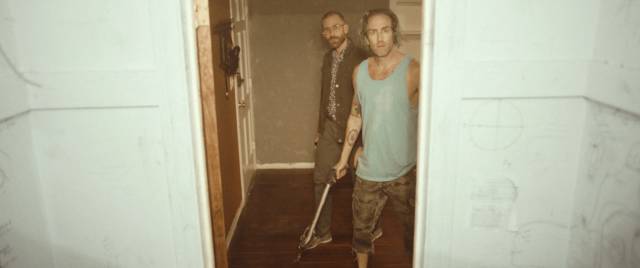
Unsurprisingly, both men realize that there could be money to be made, if they can just manage to document what they think might be a ghost. If they can get it on tape and pitch it to Netflix, they’ll have it made. So they gather together equipment, set up security cameras and motion detectors, and begin to watch for inexplicable lights and objects which move themselves. But things quickly become more complicated – brief interview clips with other people provide some commentary on the events we see, suggesting that we’re now watching the documentary Levi and John have decided to make, and that there’s some mystery hanging over events we haven’t yet seen, but which are already in the film’s past.
We hear from several different editors, each of whom has tackled the material and abandoned the project. We also hear that at some point a lot of the material was destroyed and that John and Levi recreated it with reenactments, so what we’re watching may not actually be genuine instances of supernatural manifestation, but rather dramatizations incorporating special effects. By the time we reach the enigmatic conclusion, we can’t have faith that what we’re being shown actually happened or whether John and Levi are just con-men faking a “reality” show in hopes of cashing in on an already over-saturated market.
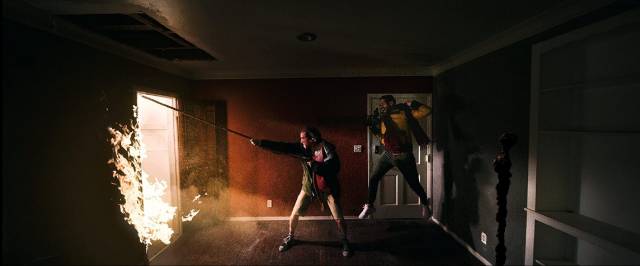
All this ambiguity nonetheless remains firmly grounded thanks to the well-drawn characters and the subtle naturalism of Benson and Moorhead’s performances. Levi and John are flawed, at times irritating, often engaging and likeable, and even though we can’t be sure that we can trust them, they manage to retain our sympathy. Watching Something in the Dirt had the same kind of impact I felt the first time I saw The Endless, a sense that I’ve encountered filmmakers who see things as I’d like to see them myself – I hope I don’t have to wait years before they make their next feature.
The image on the XYZ Films Blu-ray is excellent, blending the ordinary everyday details of the apartment with nicely conceived elements of the uncanny. Supplements include two commentary tracks, two post-screening Q&A sessions (one hosted by Mike Flanagan), some deleted scenes, test footage to figure out how to shoot the intimate project, a short making-of in which the filmmakers discuss the problems of shooting during lockdown, and a brief demonstration of the visual effects (as always with this pair, so unobtrusive that you often don’t realize you’re seeing an effect).
Comments